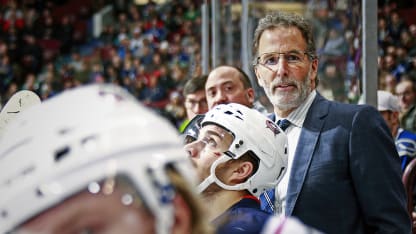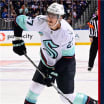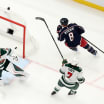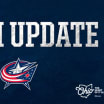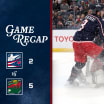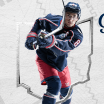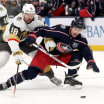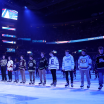In every game, video coach Dan Singleton marks plays that he believes are scoring chances. After the game concludes, Tortorella, along with assistant coaches Brad Shaw and Brad Larsen, review those chances and agree on what they identify as actual chances, both for and against the Jackets.
Chances are categorized and a variety of data points are recorded including type, game state (even strength, power play, penalty kill), location on the ice, and players involved.
Larsen then writes up each scoring chance, almost as a small story. The day after every game, those descriptions are posted for players to review and see who was credited for each chance. Much like goals and assists, players get credit for creating and helping to create each chance.
"We have a little explanation for the players," Larsen said. "We tell how a chance transpired. Was it a rush? For example, the puck entered on the left side with (Artemi) Panarin. He passed a seam pass to (Cam) Atkinson. Shot. Rebound. Goal."
Each chance is marked with a location on the ice and a time. If a player wants to take a look at the chance, they have immediate access to video to pull it up and see how the on-ice action occurred and what their role was.
Sometimes players disagree. That's welcome.
"We want the players to come and argue with us if they think they shouldn't have been dinged for a scoring chance against," Tortorella says. "That's the fun part for me. Players see the game so differently than we do as coaches. We get a chance to learn from them as far as how they're thinking and what they saw, especially the offensive guys."
Often times, a player will win his argument. Other times, the debate over how a chance was recorded will lead to specific coaching or video work for the player.
And all the while the coaching staff is also analyzing chances at a team level.
The Jackets look at scoring chances cumulatively in ten-game segments. They look for trends at the team and player levels and use that for immediate feedback on what needs to be worked on in team meetings or practices.
"We might have 15 scoring chances and nine came off the rush. That tells us we need more offensive zone time," Larsen says. "Vice versa, we may give up ten against off the rush so we have to tighten up our coverage."
Tortorella knows that 30 other NHL head coaches each probably think about scoring chances differently. In a perfect world, he'd love to find the time to get all those coaches together to bang around philosophies on what information and data they need in order to best understand what their team is doing. He thinks some great shared ideas could come from that.
But for now, this is the way the Jackets use scoring chances, and it works for them.
"We have to be really careful what we use, or you can get walked into things and handle your team the wrong way," Tortorella said. "Nothing better defines to me the story of the game than scoring chances both for and against you as far as how the game is played."
